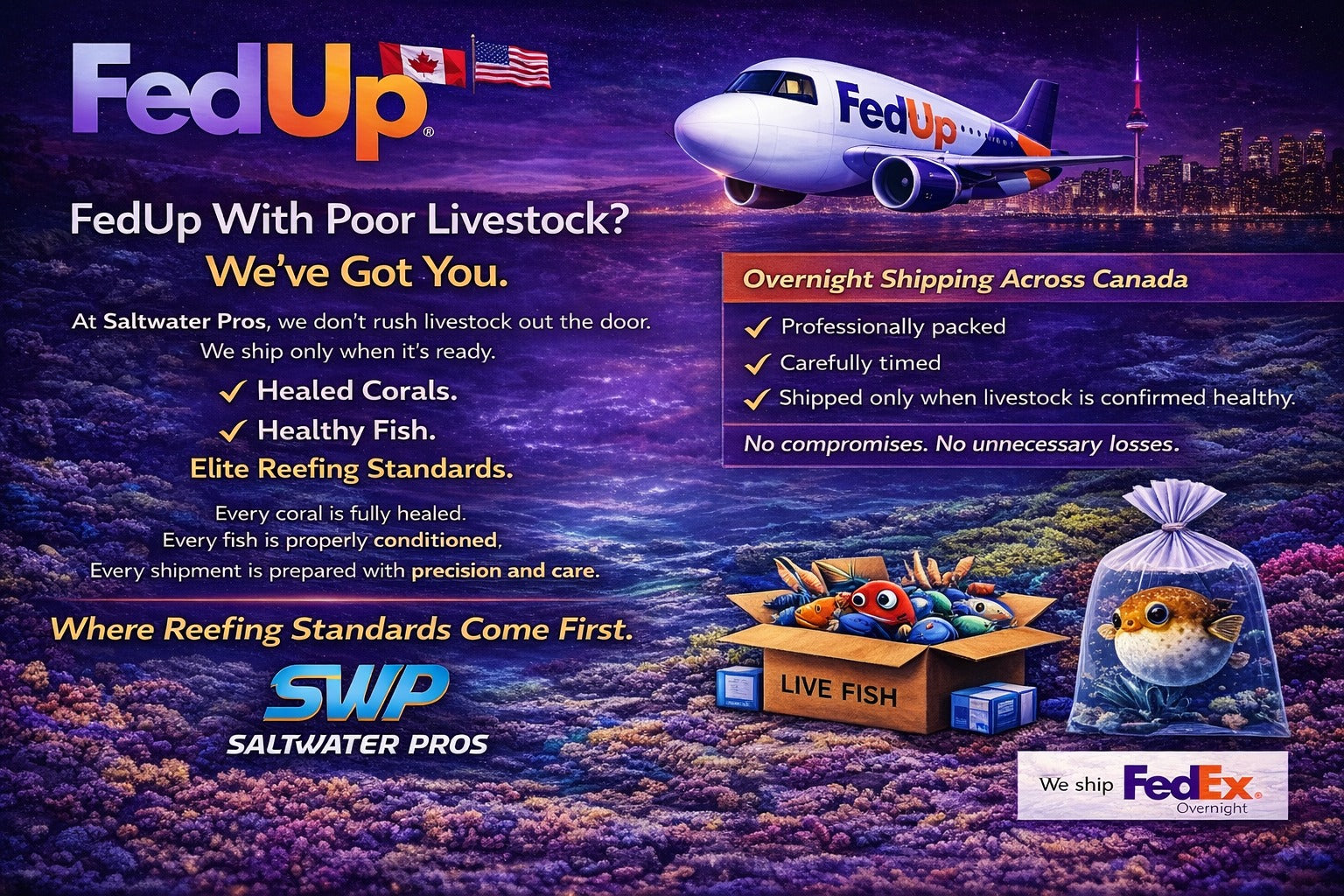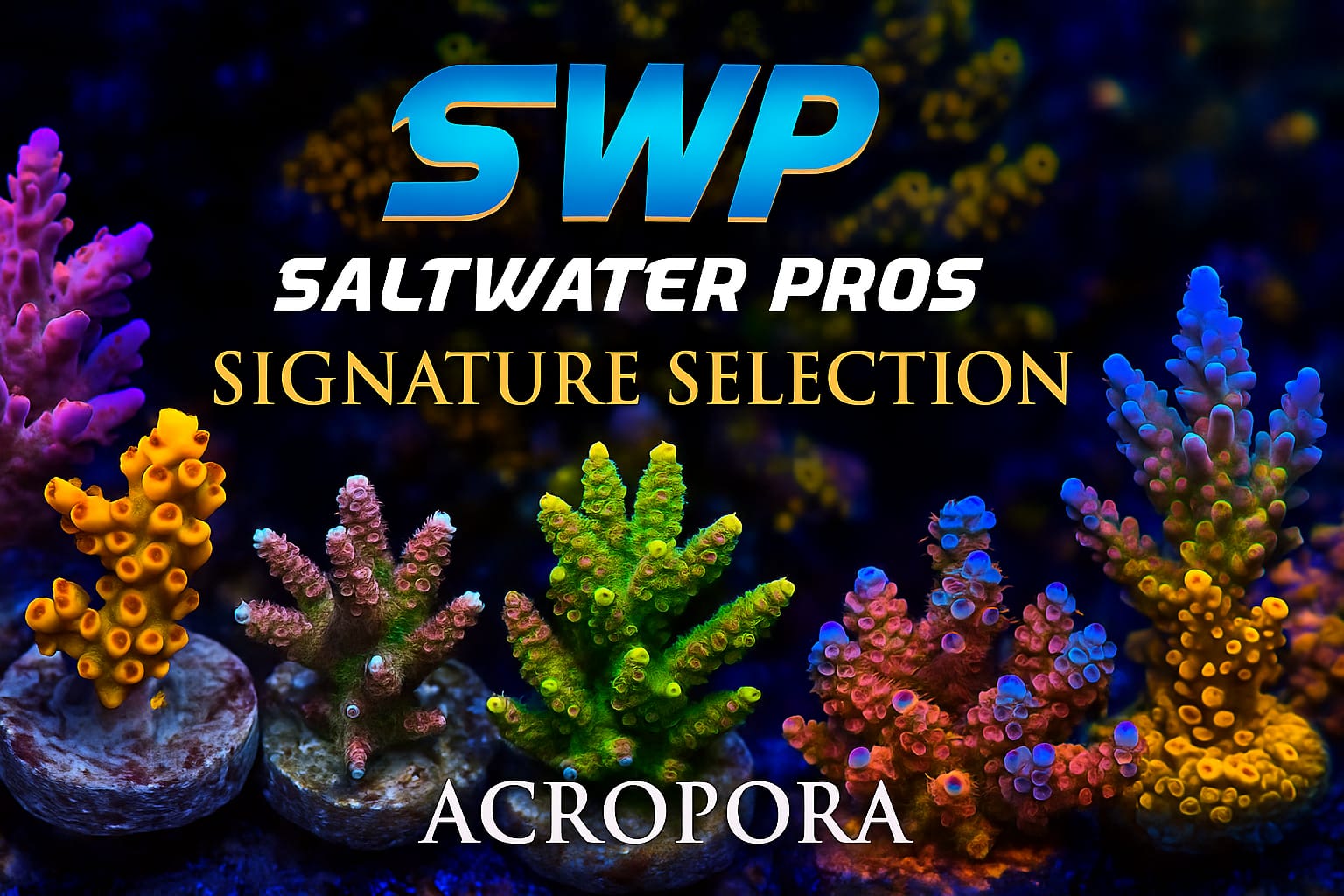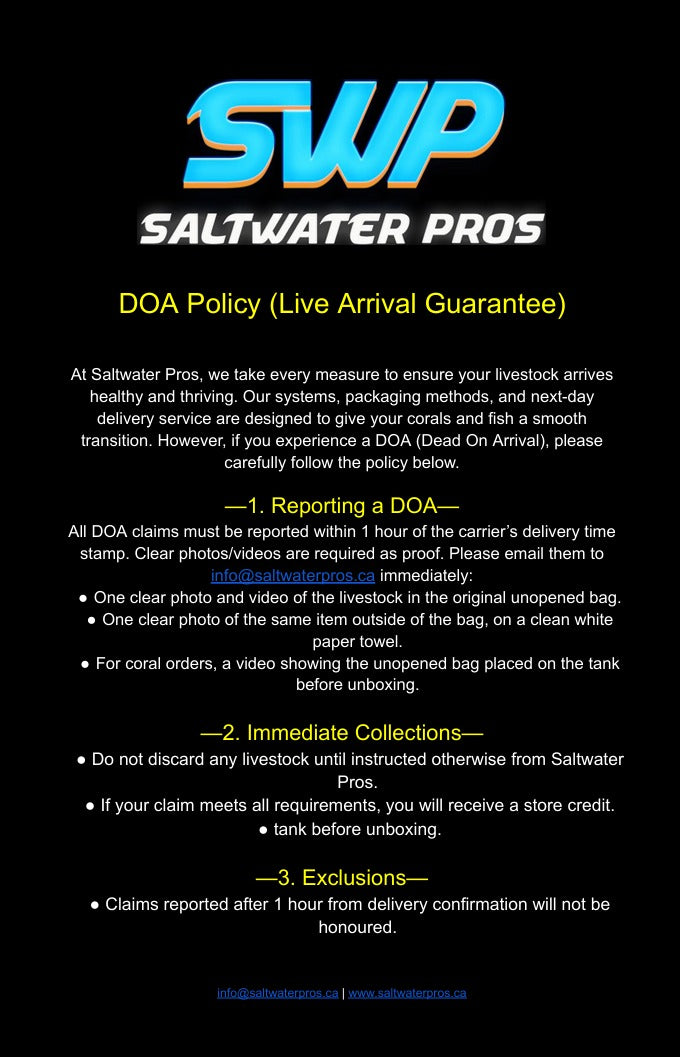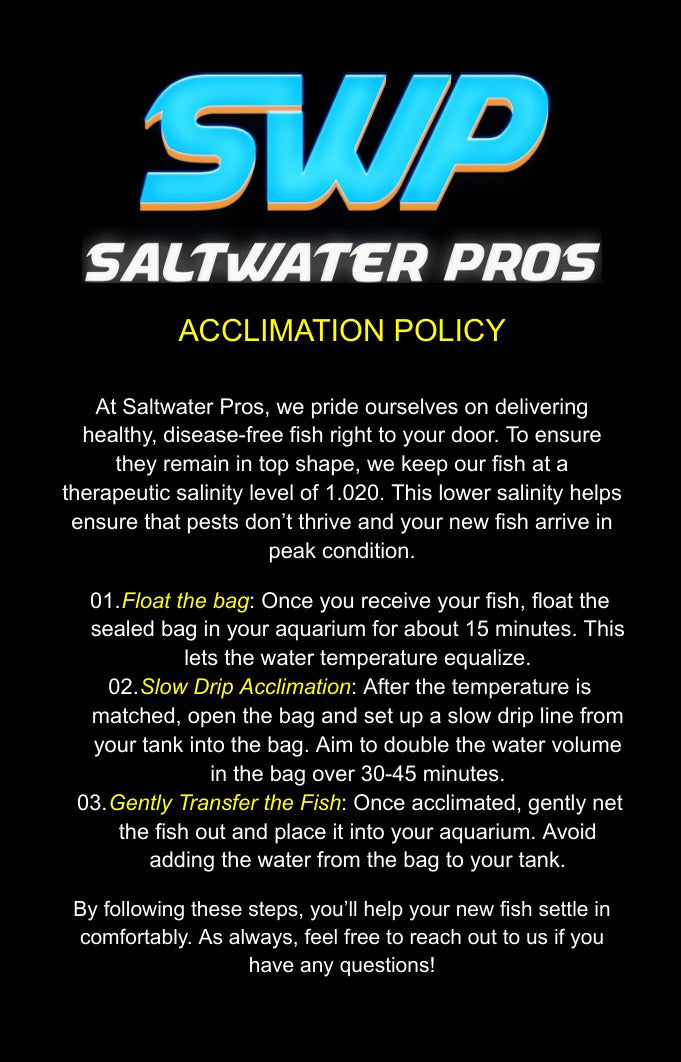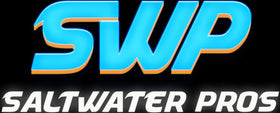Subscribe to get the latest products and special offers from Saltwater Pros.
Free Shipping On Dry Goods Over $129, and for Livestock Orders Over $299 in Ontario and Quebec, and $399 rest of Canada. Exceptions apply (*)
New customer? Create your account
Lost password? Recover password
Remembered your password?

